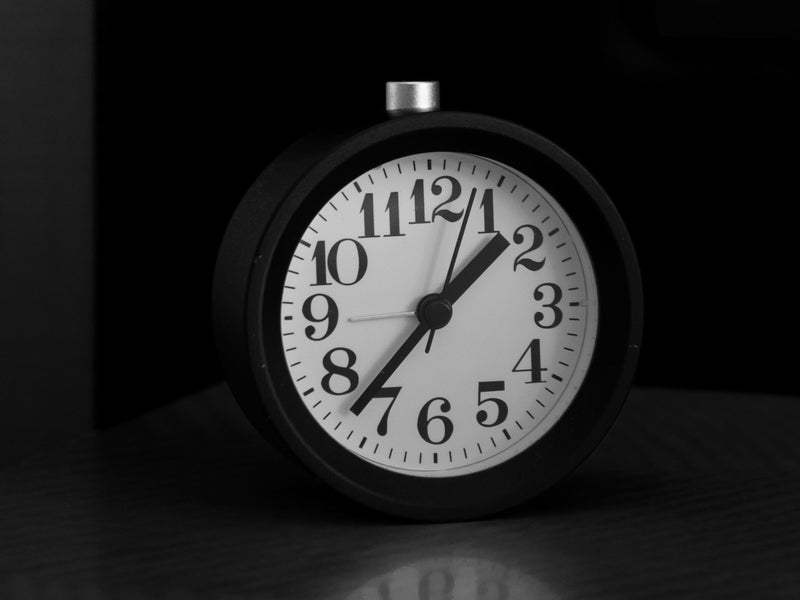There has long been plenty of shame associated with the idea of food. While both men and women tend to enjoy our food (see: America), women are statistically more likely to reach for it during times of stress, emotional distress or overwhelm. In fact, researchers have found that women are both more likely to be emotional eaters, and also more likely to be unhappy with their weight.
It’s a pattern that most of us are painfully familiar with. Stress. Eat. Rinse. Repeat.
Emotional eating (and stress drinking) has become as reliable for female anti-anxiety as a prescription, but with pumpkin spice memes.
America: Snack Capital Of The Universe
We invented snacking, fast food and the chip industrial complex. Then came Frappuccinos and vegan queso. Now there's Postmates, Doordash, and the 24-7 news (and TikTok food vid) cycle. Is it a surprise that we are grabbing a snack every second? Betty Draper had cigarettes, we have organic peanut butter cups.
From Lillian E. Edds’ The Food Industry: Lifeline of America, it’s clear that pre-industrialization, our relationship with food was very different. Convenience meant getting in the car to go purchase a limited supply of regional products, the majority of which required some sort of preparation to take place at home.
With convenience came the big and tasty, including more calorific portion sizes and sky-high sugar contents.
The Guilt We Grew Up With
What didn’t evolve during this food revolution was society’s perception of women. Media may talk about how a modern woman is the same weight as the average man from the 1960s—and yet, not nearly as many pieces discuss how men’s weight have also increased just as drastically.
Luckily, we see more body inclusion in marketing. But many Gen X and Xennial women have diet culture deeply embedded in our brains. We grew up with the Kate Moss or Cindy Crawford ideal.
Arguably, a daily diet of Instagram is even more high-pressure. One post might promise that you are beautiful as you are, while the next promotes diet tea or fitness apps that can be more demotivating than inspiring.
Stress Eating And The Emotional Load
We get stressed, sad, guilty. Hello snacks. Food for comfort is something primal that goes way deep down, into the very nature of our being.
We eat because that quick release of serotonin coming from ice cream or crackers is enough to keep the feelings of overwhelm at bay. Then we guilt and shame ourselves for it. Studies show, this only drives us to eat more. The little bit of stress relief we gain by eating is only temporary and the stress cycle will always leave us wanting more.
How Stress Drives Cravings & Pathways
The concept of the stress cycle was introduced too many of us by the book Burnout by the Nagoski sisters.
In short: Evidence shows our bodies need a release or closure to an adrenaline or cortisol rush.
Our bodies evolved for stress. The bear chased you. Stress hormones fueled you to run. Eventually, you got away. You stopped running. This end signaled the crosstalk in your systems to say "it's done". Safe. Loop closed. Cycle over.
Today, your stress trigger may be a tough meeting, conflict with kid or partner, or the average news alert. Your hormones surge in response. But you are still scrolling or on to the next meeting. More stress may pile on top of the original with another text, a Slack alert or call about your mom's prognosis.
Eating is a highly efficient (and tasty!) physical "DONE" signal. You get the physical activity, the sensory stimulation and a dopamine hit to your neurotransmitters.
This leaves our adrenal gland in a state of confusion. When does it stop increasing your cortisol levels? Never-ending cravings lead to non-stop snacking and DoorDash orders and too many feelings of self-disappointment.
Our bodies are a system. Crosstalk in our systems sets up networks like a speed dial in our brains and bodies. So the 2 pm or 9 pm snack compulsion is very real. Frequent stress eating starts to create neural pathways right to that treat or snack. It can feel as strong as Betty's drive to light that Camel after she was done with the dishes.
Good news: these pathways can be reprogrammed or redirected.
Facing Down Stress Cravings & Habits
We are not here to shame any pint of Jeni's these days. But what's complicated is for many of us, emotional eating is something we don't always enjoy. It can feel compulsive, empty, even mindless. Who hasn't been surprised to see a pint or bag is suddenly empty?
These are our top tips for rewiring the stress eating habit to put it treats in a more intentional and rewarding place in your life.
Identify & Write Down Your Stressors
The first step is to ask why. What is the thing that sparks your need to stress eat? And is it the same thing every time?
When you find yourself having a craving, grab a pen or your notes app.
- What is the circumstance? - stressful work deadline
- How are you feeling? - panicked
- Where is it in your body? - chest
- Craving? - chocolate
- Is your stomach hungry? - no
Do you need a snack or something else? Keep track of these stressors and their frequency on paper or in a food journal to help you find patterns.
Move
A few jumping jacks, a walk to the corner, a few Wim Hoff or deep breaths or a 1 minute dance break can all break the body tension of this cycle. Try them and again, note what clears your mind and adrenal cache the best.
Replace Your Trigger Foods
We all have a favorite snack to reach for when it’s crunch time. You know, the one that you have to finish every time because you can’t bear to save any for later. Now you need to take that snack and replace it.
Getting rid of the snack altogether, may go further to worsen the cravings than it would to replace them with better, energy-dense foods.
Try to replace your go-to's with something that gives you a big sensory hit.
Keep your healthy replacements nearby in the spaces where you most often have stressors and try not to practice food restriction since it might make your need for food consumption more intense. The ideal is to get to a point of mindful eating.
Create A Sensory "Closer"
One of the best things you can do when trying to overcome emotional eating is to learn how to divert your attention. You might find avoiding trigger foods will not always be possible so you need to teach yourself not to act on impulse.
Two of the things we have found most effective when combatting stress eating are scents and tastes (within limits). We’ll go into more details about scent first.
Some research papers have found that when you’re experiencing a serious craving for food, smelling something delicious for just two minutes reduces the need to eat unhealthily. Think candle, essential oils or brewing a delicious hot drink like coffee or tea.
That's part of the inspiration behind our Stave the Crave functional drink mix. Made with adaptogenic mushrooms, beneficial herbs and real foods (nothing artificial), you mix it into your favorite hot beverage. It helps cut sugar cravings, creates a feeling of satiety and actually does reduce your stress levels and boost your resilience—unlike actual stress eating.
More often than not, having something to drink will satisfy the cravings caused by stress. During his explanation of how he manages his hunger meter during his fasting window of 16 hours, Crews mentions that he drinks amino acids, coffees, teas, and other liquids to reduce cravings. You can use the same approach to cut down on unnecessary snacking and build a healthy relationship with your food preference.
Sources:
- Annalect. “The Evolution of Advertising in the Food and Beverage Industry,” March 13, 2017. https://www.annalect.com/the-evolution-of-advertising-in-the-food-and-beverage-industry/.
- Biswas, Dipayan, and Courtney Szocs. “The Smell of Healthy Choices: Cross-Modal Sensory Compensation Effects of Ambient Scent on Food Purchases.” Journal of Marketing Research 56, no. 1 (January 4, 2019): 123–41. https://doi.org/10.1177/0022243718820585.
- Ingraham, Christopher. “The Average American Woman Now Weighs as Much as the Average 1960s Man.” Washington Post, June 12, 2015. https://www.washingtonpost.com/news/wonk/wp/2015/06/12/look-at-how-much-weight-weve-gained-since-the-1960s/.
- Lin, Connie. “The Average Woman Now Weighs as Much as a 1960s Man.” Good Housekeeping, June 23, 2022. https://www.goodhousekeeping.com/health/diet-nutrition/a32957/average-american-woman-weight/.
-
Thompson, Sharon V., Sharon V. Thompson, Samantha Romeo, and Ommega Internationals. “Gender and Racial Differences in Emotional Eating, Food Addiction Symptoms, and Body Weight Satisfaction among Undergraduates.” Journal of Diabetes and Obesity 2, no. 4 (January 1, 2015): 1–6. https://doi.org/10.15436/2376-0494.15.035.
This article is intended for informational purposes and is not intended to replace a one-on-one medical consultation with a professional. Wile, Inc researches and shares information and advice from our own research and advisors. We encourage every woman to research, ask questions and speak to a trusted health care professional to make her own best decisions.




